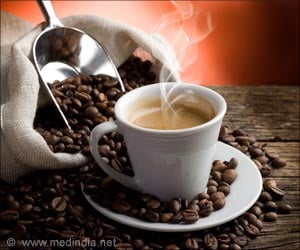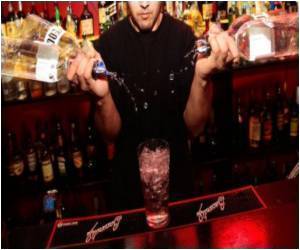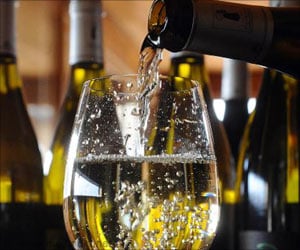Energy drinks have become increasingly popular among teenagers and young adults during recent years.

Results will be published in the June 2014 online-only issue of Alcoholism: Clinical & Experimental Research and are currently available at Early View.
"In Italy, consumption of energy drinks (EDs) has increased from 2.67 million litres in 2006 to 2.97 million litres in 2009 – an increase of 11 percent," said Maria Pavia, a professor of public health in the department of health sciences at the University of Catanzaro 'Magna Græcia,' as well as corresponding author for the study. "North America is still the leading consumer, at consumption levels of 36 percent of global volumes. Sales of EDs have increased substantially in recent years, approaching $20 billion in the U.S. in 2013. Although there is no information readily available about how much of this is attributable to youth consumption, it is known that approximately 30 to 50 percent of adolescents and young adults report regularly consuming EDs."
"The most noticeable trend regarding EDs in Italy is the growing availability of them across different channels," added Emilia Prospero, professor of hygiene at the Università Politecnica delle Marche. "EDs are widely available in pubs, discos, and cafés/bars. Italians consume EDs mainly in bars and nightclubs, as a mixer for alcoholic drinks, or for direct consumption. EDs are also attracting adolescents with a hectic lifestyle seeking to increase their energy levels during the day, and furthermore benefit from consideration as a "stay-awake" agent for studying. EDs seem to be regarded as the dynamic alternative to carbonates."
"EDs contain amounts of caffeine that are substantially higher than what is found in a standard cup of coffee," described Pavia. "Other main active ingredients of EDs include glucose, taurine, B vitamins, and herbal extracts, such as guarana, that could be a source of supplementary caffeine. Excessive caffeine intake by adolescents can produce a number of deleterious health effects, such as irritability, cardiovascular symptoms, sleep impairment, and feelings of nausea and nervousness."
Prospero agreed. "Caffeine toxicity from ED consumption has been reported from poison centres, and increasingly among adolescents," she said. "Moreover, it should not be overlooked that the high-sugar content in caffeinated EDs is similar to other soft drinks and is known to contribute to obesity."
Advertisement
"More than half of respondents reported consuming EDs during the 30 days before the survey," said Pavia. "This confirms that ED consumption is a very popular practice among young people, largely due to its appeal based on the temporary benefits of increased alertness, improved mood, and enhanced mental and physical energy. A sizeable percentage believed that drinking EDs is the same as drinking carbonated beverages or rehydrating sport drinks. In addition, 63 percent of adolescents had drunk alcohol mixed with EDs during the 30 days before the survey, while more than half reported having consumed alcohol alone - not mixed with EDs - at least once during the 30 days before the survey. This alcohol/ED consumption is typically higher in males, current smokers, as well as those using marijuana, having more sexual partners, and those who rode with a driver who had been drinking alcohol."
Advertisement
For example, she added, EDs should not be confused with sports drinks that re-hydrate the body and provide sugars, which the body then burns to create energy and replenish electrolytes. "EDs are safe, but should be consumed in moderation," said Prospero. "In some cases, one ED could have more caffeine than the safe daily intake for many teens. Adolescents should be aware of how much caffeine they are consuming each day from EDs, as well as from other sources, since it is important to stay within moderate, safe intake levels. Moreover, adolescents should avoid mixing EDs with alcohol."
"Our findings suggest that comprehensive educational programs among youths focusing on the potential health effects of EDs, alcohol, and the two combined, are strongly advisable," Pavia said. "Moreover, parents, teachers, and other caregivers should recognize excessive ED use as a potential warning sign for other problems or difficulties. Furthermore, ED manufacturers need to label their product's caffeine content … from all sources contained in the beverage in order to enable consumers to enjoy EDs moderately and responsibly."
Prospero agreed. "Given the observed negative effects of caffeine consumption, particularly in a vulnerable adolescent population, health authorities should require that labeling and any marketing of these products should include appropriate health warnings as well as the national poisons hotline number," she said. "EDs are marketed for similar effects and should carry similar warning labels as non-prescription, over-the-counter caffeine tablets."
Source-Eurekalert












